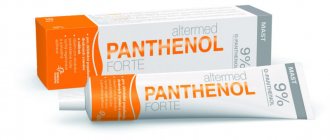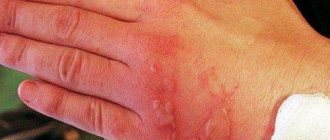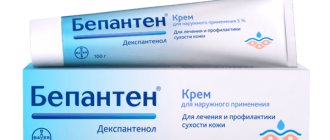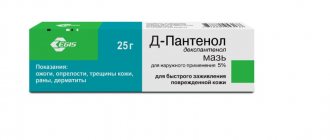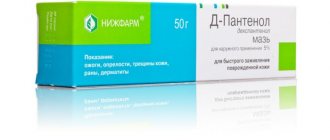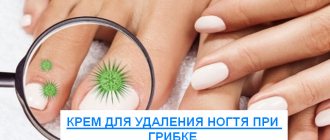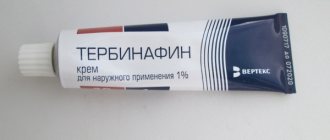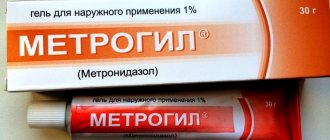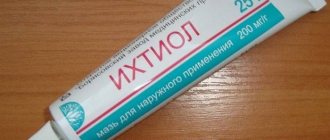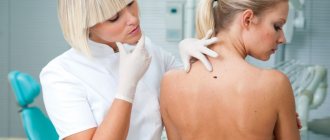Experts emphasize that it is important not only to eliminate a painful or pathogenic process localized in the epidermis, but also to establish its cause. Only with complex therapy can the risks of relapse of the disease be mitigated.
It turns out that there is a universal “helper” that makes it easy to get rid of the listed ailments and associated complications. The instructions for use of D-Panthenol contain a complete list of diseases and pathologies eliminated by the drug in question. We will discuss it in today’s material.
Description of the drug
D-Panthenol ointment is a common and effective remedy that activates tissue regeneration and saturates the epidermis with oxygen. What is this pharmaceutical product used for? The medication is prescribed for treating skin for burns, dermatitis, inflammation and cracks. The drug has become widespread not only in medicine, but also in cosmetology.
Useful properties of liniment components:
- increases the elasticity and strength of collagen fibers;
- activates cellular metabolic processes;
- eliminates local inflammatory processes;
- Provides the dermis with moisture, eliminating the risk of drying out.
The undeniable advantage of the drug is the possibility of its use for preventive purposes.
Clinical and pharmacological group
Depanthenol ointment is a medicinal group of vitamin preparations. In fact, we are talking about a medication that activates tissue regeneration and trophism. It is used only externally, locally. Liniment is quickly absorbed by the epithelial layer and penetrates into the deep spheres of the dermis, thereby providing a prolonged therapeutic effect.
Pharmacological action
The pharmacological action of d-panthenol is aimed at activating cellular regeneration in problematic or damaged tissues. The main active component of the ointment is a synthetic analogue of vitamin B5. We are talking about a substance called dexpanthenol, which is involved in a number of biochemical processes:
- breakdown of carbohydrate compounds and subsequent release of energy;
- synthesis of acids, sterols and hormones;
- fat, protein and carbohydrate metabolism at the intercellular level.
After application to the surface of the skin, the components of the drug enter into biochemical reactions and ensure the formation of a pantothenic acid derivative.
The pharmacological action of this substance is as follows:
- increasing the strength characteristics of collagen compounds and fibers;
- activation of restoration of damaged areas of the dermis;
- stimulation of metabolism at the cellular level;
- oxygen saturation of the deep layers of the epidermis;
- increasing the protective properties of the epithelial layer.
Additional ingredients of the composition soften the stratum corneum of the skin, normalize its trophism and enhance the therapeutic effect of the main components.
Release form and composition
The drug D-Panthenol is a non-hormonal drug produced in the dosage form of ointment and cream for external use.
- Ointment 5% has a yellowish homogeneous consistency with a distinct odor of lanolin. Packaged in metal tubes of 50, 35, 30 and 25 g. Each aluminum tube is supplied with an annotation in the form of an insert and placed in a cardboard package.
- The cream is a white, medium-thick consistency with a characteristic odor. Supplied in 50 and 25 g metal tubes. Each one comes with instructions for use.
These dosage forms differ not only in consistency, but also in ingredients and duration of action.
Composition of Depanthenol ointment (per 1 g):
- dexpanthenol;
- dimethicone;
- propylene glycol;
- lanolin;
- medical paraffin, petroleum jelly, wax;
- distilled water.
The ointment provides a prolonged therapeutic effect, since it has a viscous consistency that is gradually absorbed into problem areas. The cream differs from liniment only in minor ingredients: monostearate, flavors, dimethicone, cetearyl octanoate, cetanol.
What is the difference between ointment and D-Panthenol cream?
The dosage forms discussed above have an absolutely identical active ingredient - dexpanthenol. The structural differences between cream and ointment directly depend on the auxiliary ingredients that determine the structural features of the medicine.
The main differences between the 2 forms of medication:
- The cream base is quickly absorbed by the epithelium and does not leave any traces on the skin surface. This form is ideal for the treatment of weeping wounds, diaper rash, and dermatitis.
- An ointment composition is the best option for the treatment of ailments where it is important to ensure a prolonged effect of the medicine. The thick consistency is gradually absorbed into the base of the dermis, simultaneously forming a protective layer on the skin.
The ointment is traditionally prescribed for postoperative treatment of wounds, for irritations, bedsores, boils, inflammation and trophic ulcers of the lower extremities. If we are talking about shallow wounds, scratches, abrasions and superficial violation of the integrity of the skin, it is preferable to apply cream.
Storage conditions and periods
Experts recommend storing D-Panthenol in a dark place, away from sources of moisture and direct sunlight. Recommended temperature range is +15-+25 degrees. The shelf life of the ointment is limited to 24 months, provided that the aluminum tube remains sealed. The cream has a shelf life of 18 months from the date of manufacture indicated on the packaging.
Are there hormones in Panetnol?
Panthenol is not a hormonal drug. A rapid wound healing and anti-inflammatory effect is achieved due to the strong concentration of vitamin B in the composition. It promotes skin cell nutrition, healing, regeneration, and also provides a deep level of hydration.
To summarize, it can be noted that Panthenol is not hormonal, so it can be used by women during pregnancy, breastfeeding and small children from birth, if there are no contraindications and allergic reactions to the components of the composition.
Instructions for use
According to the official instructions for use, Depanthenol ointment and cream are applied to the affected areas only externally, locally. The medicine is evenly distributed throughout the problem area in a thin layer. Light rubbing into the stratum corneum of the dermis is allowed. The frequency of treatment is from 2 to 4 times a day. The duration of treatment is determined by the dermatologist on an individual basis.
Indications and contraindications
What does D-Panthenol ointment help with? Regardless of the form of the drug, the medication in question is prescribed for the prevention and treatment of a number of dermatological pathologies and associated complications.
The pharmacological product is prescribed for:
- chemical and thermal burns, pain, sunburn;
- inflammation and cracked nipples during breastfeeding;
- cracks and dryness of the dermis;
- diaper rash in children;
- therapy of anal fissures;
- shallow scratches and wounds;
- dermatoses and dermatitis of various etiologies;
- complex therapy of trophic ulcerative lesions;
- bedsores;
- postoperative restoration of damaged segments of the dermis;
- skin irritations after sun exposure;
- daily care for sensitive and flaky epithelium.
If it is necessary to quickly eliminate the consequences of a thermal burn, it is preferable to use Panthenol spray. It is equally important to take into account the list of contraindications for prescribing the medication in question.
There are no contraindications to prescribing the drug. The only exception to the rules is individual intolerance to the main or minor ingredients of the composition.
Directions for use and doses
D-Panthenol ointment and cream are applied to the affected or inflamed areas of the skin superficially, locally. If these areas become infected, it is important to pre-treat the wound with an antiseptic. A thin layer of medication is evenly distributed over the affected area.
Recommendations for application and dosage:
- For infants, problem areas of the skin are treated after each bath, diaper or underwear change;
- cracked nipples are lubricated with liniment after each feeding of the child, the average dosage does not exceed 5 g per 1 procedure;
- for cosmetic purposes - the ointment is applied 2-3 times for 10 minutes, after which the composition is washed off with warm water;
- treatment of dermatitis, diaper rash, etc. – 2-5 g of liniment is applied 3-4 times to the epithelial layer;
- therapy for eczema - the composition is applied 3-4 times to the affected areas of the skin, 3-7 g each, based on the area of the pathogenic process.
Doctors recommend not applying the medicine to the mucous membrane of the eyes; they treat the face very carefully.
Side effects and special instructions
D-Panthenol is highly tolerable in patients, regardless of age group. As an exception, side effects manifested in the form of allergic reactions are recorded:
- hives;
- local increase in temperature;
- burning of the dermis, mild itching;
- manifestations of contact dermatitis.
The listed effects do not require any additional treatment and disappear after discontinuation of the ointment or cream. The medication does not affect the functional abilities of the central nervous system, since it does not enter the systemic bloodstream.
Pregnancy and lactation
Is it possible to use D-Panthenol gel or ointment during pregnancy? Experts recommend using the drug in question in any form, only under the supervision of a doctor. In the 1st trimester, with a thorough adjustment of the mother’s hormonal levels, individual allergic reactions may occur.
During lactation the medication is absolutely safe. The components of the pharmaceutical product are absolutely harmless to the newborn.
Use in childhood
According to the official instructions for use, Depanthenol ointment is absolutely safe for children. There are no age restrictions for its use. It is recommended to first consult with a therapist or dermatologist.
Panthenol for itchy skin. Antihistamine ointments
These ointments for itching, redness and peeling quickly relieve the patient's condition, removing swelling and creating a slight cooling effect. Which antihistamine ointment for itching is best depends on the severity of the discomfort:
- Non-hormonal ones can be used for mild forms of allergies or after single insect bites.
- Hormonal ones eliminate local skin irritations and help with severe allergic reactions.
- Antihistamine ointments based on antibiotics.
Non-hormonal ointments include the following:
- Fenistil. This topical drug quickly eliminates itching and creates an anesthetic effect. After covering the skin, the product begins to act within a few minutes, and the effect lasts for 2-3 hours or more. Fenistil helps with insect bites, eczema, and mild atopic dermatitis. This ointment is not suitable for the treatment of children and pregnant women.
- Panthenol. Relieves itching, heals small wounds and removes inflammation. Completely safe, therefore suitable even for children. It is prescribed for itching due to erosions, dermatitis and other skin irritations.
- Skin cap. This non-hormonal drug is effective for itching caused by microbes and fungi. It eliminates itching due to neurodermatitis, psoriasis and dryness. The use of the drug is allowed even for a long time if the patient does not have individual intolerance.
Which hormonal ointment to use for itching depends on the specific situation, but the most popular are two drugs:
- Advantan. This topical medication relieves redness, itching and inflammation. Useful for dermatitis of various forms and eczema. Children cannot be treated with it until six months, and contraindications include tuberculosis and herpes zoster. Sometimes when using this ointment for itchy skin, the active substance causes mild side effects - rash and burning.
- Prednisolone. According to some doctors, this is the best and cheapest ointment for itching and flaking. It quickly relieves inflammation and itching, so it is prescribed for dermatitis, eczema, and alopecia. For women during pregnancy and breastfeeding, the ointment is contraindicated, as is for people with bacterial and viral diseases.
Among ointments with antibiotics, Levomekol and Erythromycin are considered the most effective and inexpensive.
Basically, the use of Levomekol ointment is recommended for suppuration or infection of wounds, but it also copes well with itching. This drug has powerful antimicrobial properties, is quickly absorbed into the skin and starts regenerative processes.
Erythromycin ointment based on the active component of the macrolide group has a wide spectrum of action. It is better not to use this drug without a doctor’s instructions, as it has contraindications and side effects. This ointment is contraindicated for itching during pregnancy and breastfeeding, as well as for liver disease.
Analogs
The pharmaceutical industry produces a number of substitutes whose active ingredient is dexpanthenol.
Analogues of Depanthenol:
- Dexpanthenol;
- Pantoderm;
- Bepanthen cream;
- Panthenol ointment.
To achieve the desired therapeutic effect, it is important to consult with your doctor. The specialist will not only recommend the appropriate dosage of the medication, but also an effective therapeutic regimen.
Reviews
Dina, 31 years old, Murmansk
I only use Depanthenol spray for children. This form is best suited for treating diaper rash in infants. The main advantage of the spray is that there is no need for tactile contact with the problem area, therefore, you cannot carry dirt with your hands. The ointment can injure delicate skin or wounds. I am for safety and effectiveness!
Read further:
Which cream is better - Bepanten or Panthenol (review of effectiveness and reviews from experts)
Afloderm ointment: instructions for use and patient reviews
Belogent ointment (cream): instructions for use, review and reviews
Panthenol cream for the face: instructions for use for wrinkles and acne, review and reviews
Bactroban ointment - instructions for using the antibiotic and patient reviews
D-Panthenol cream (review) from 250 rub.
Overall
4.5
- Efficiency
- Price
- Safety
- Availability
Pros
- Efficiency
- Smell
- Wide spectrum of action
- Not greasy
Cons
- Price
